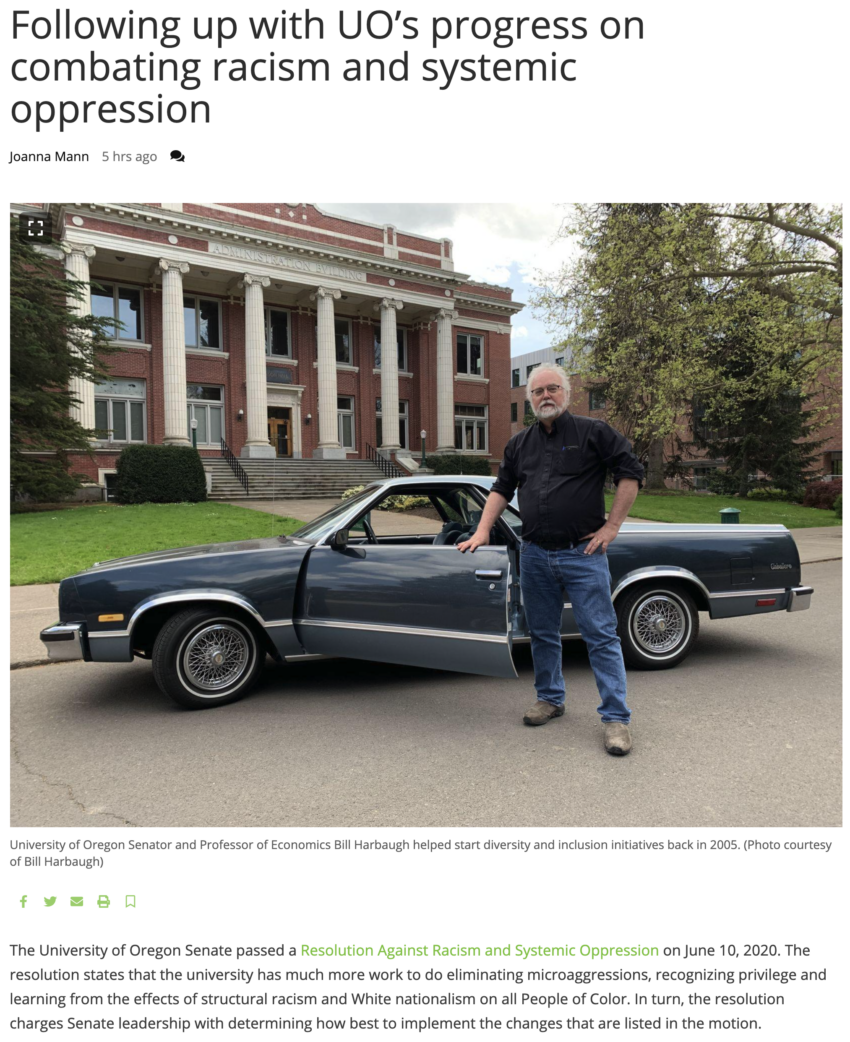In the Daily Emerald here:

UO has a long history of expensive and ineffective diversity and inclusion efforts, mostly coming out of the bloated offices of our Provost and VPEI Yvette Alex-Assensoh. Five year “Diversity Action Plans” with no follow through, an under-represented faculty cluster hire that brought 5 new minority faculty to campus – all of whom left within a few years – and of course those $40K “Jeffersonian Dinners” and her I.D.E.A.L ™ and L.A.C.E (c) things – which don’t even rise to the standard of plans.
Last Spring the Senate joined in with a “Resolution Against Racism and Systemic Oppression” – it’s a resolution to ask committees to think about developing plans!
Now Provost Phillips – without input from the Senate or relevant departments – has joined in with a new cluster hire plan – while the VPEI hasn’t even done the exit interviews to figure out why the last one failed.
So here are some quotes from today’s Emerald article by reporter Joanna Mann about taking action, not coming up with lists or yet another plan, or redoing something we know will fail just so someone can pad their resume with it:
Diversity and inclusion efforts are not just now emerging with the passing of this resolution. Fifteen years ago, the university launched the Summer Academy to Inspire Learning to get low income and underrepresented high school students to attend college. UO Economics Professor Bill Harbaugh said he helped start the program in 2005 when the Senate passed a different resolution regarding diversity.
“It was all talk with no action,” Harbaugh said. “We thought, ‘This is bullshit. We’re going to actually do something.’”
SAIL brings local high school students to campus for a week-long summer camp run by faculty volunteers. This summer, the camp was conducted online, which Harbaugh said allowed them to reach students from all over the state. During the school year, SAIL staff members go to local high school classes and give presentations about what college is like and why it’s important.
“The statistical analysis that we have been able to do suggests that students who come and stay in the program are about twice as likely to go on to college as the control group,” Harbaugh said.
Be First to Comment